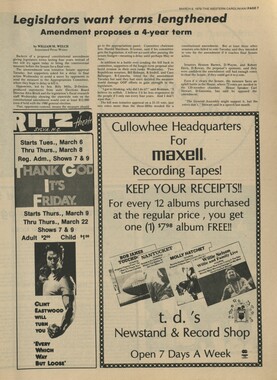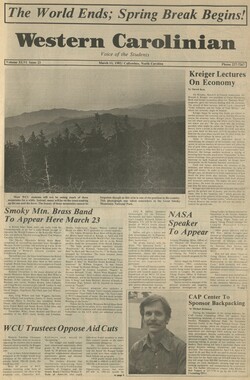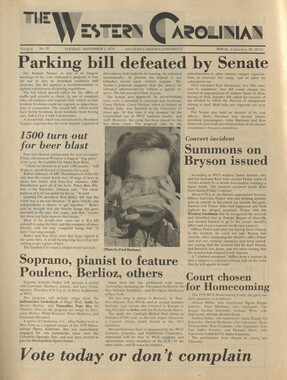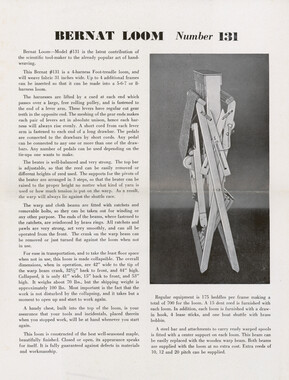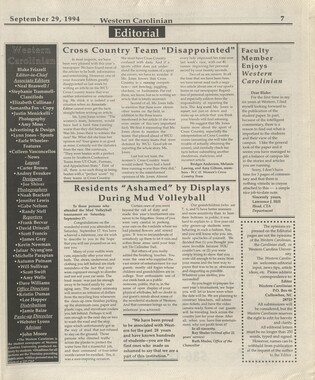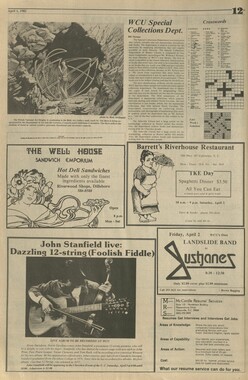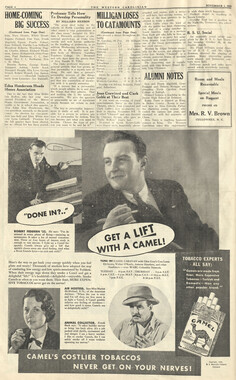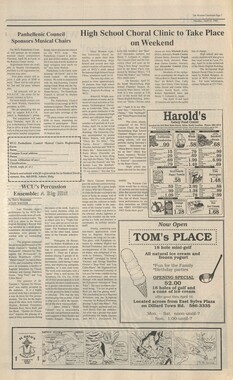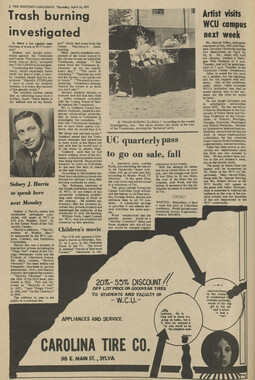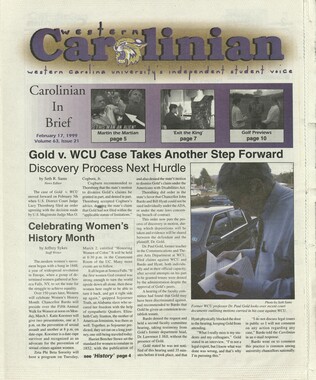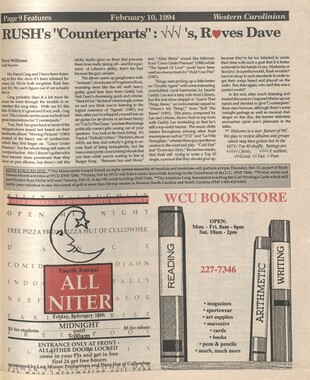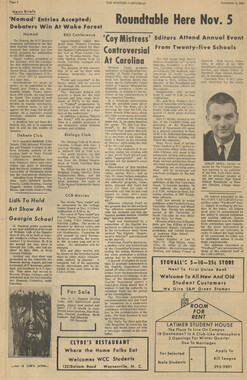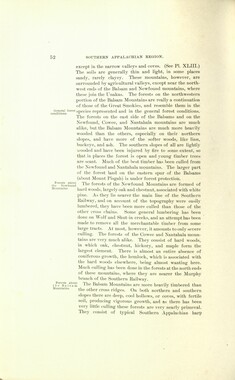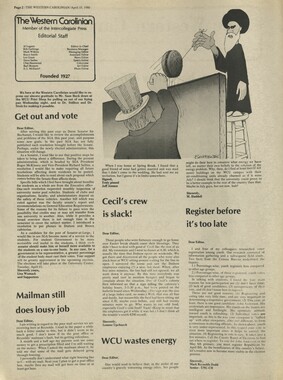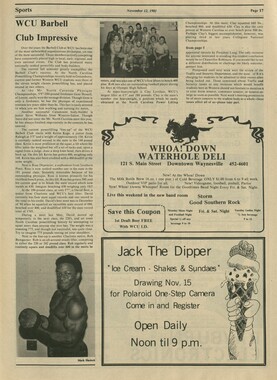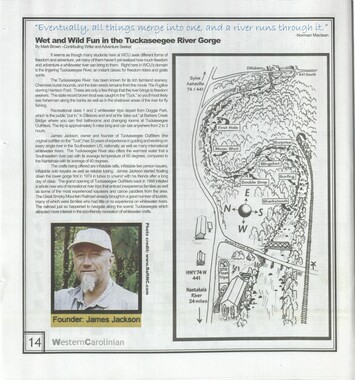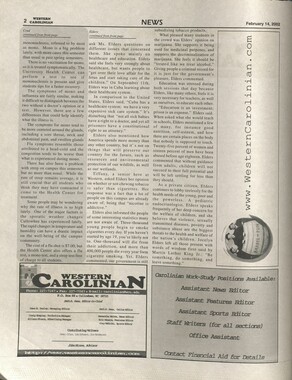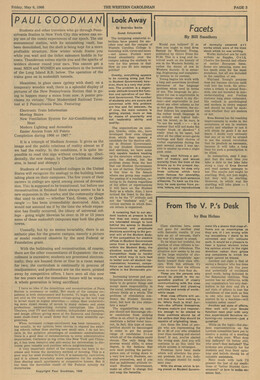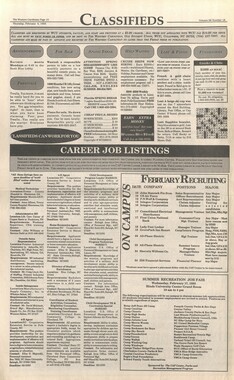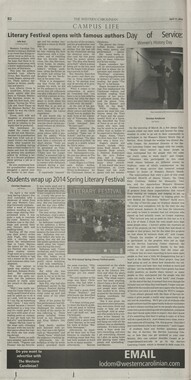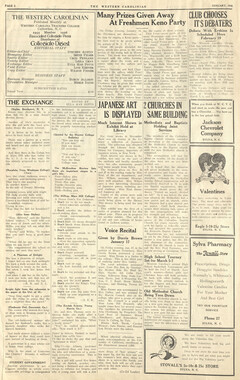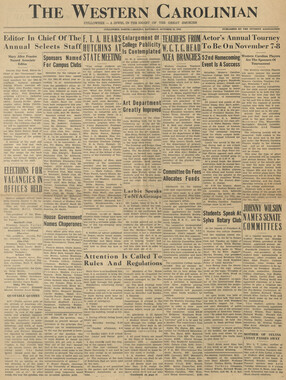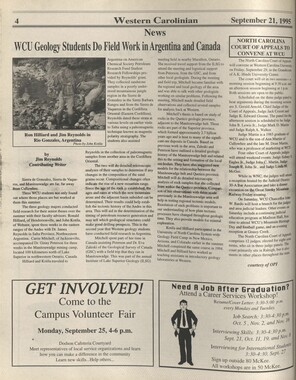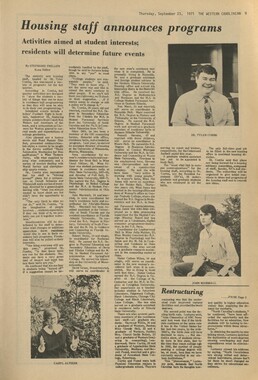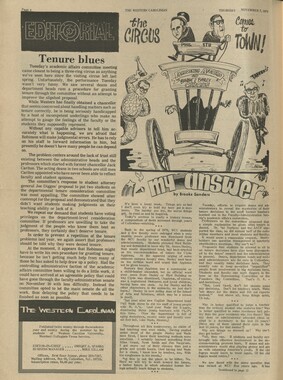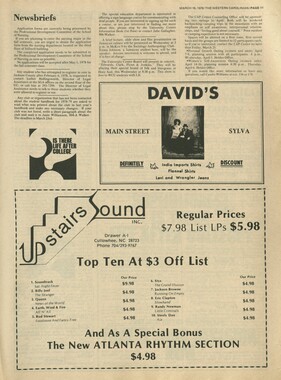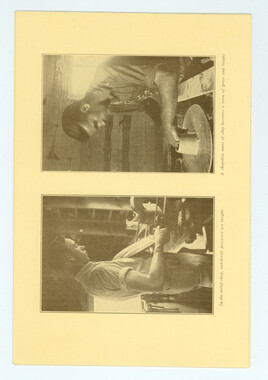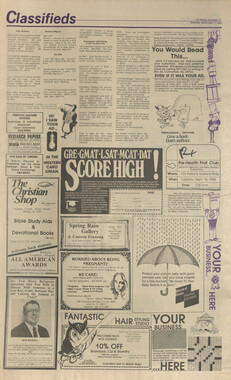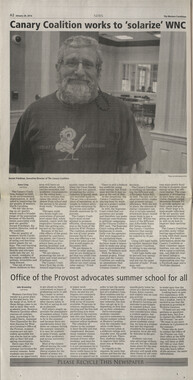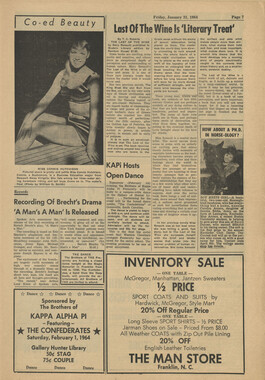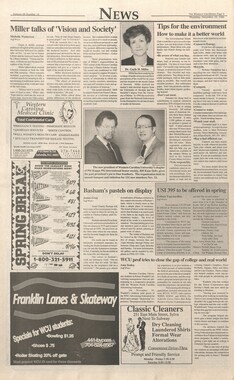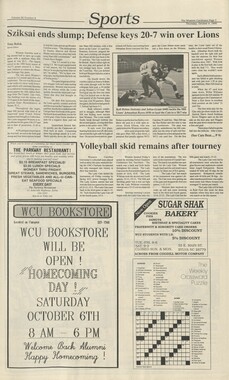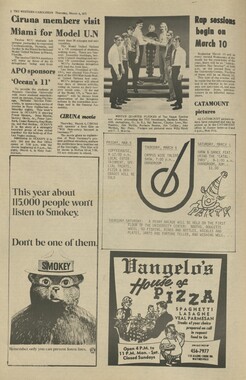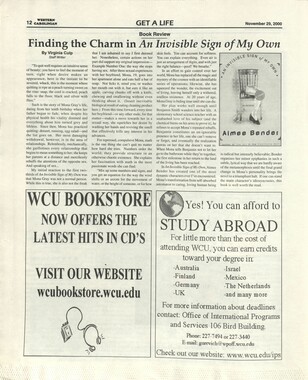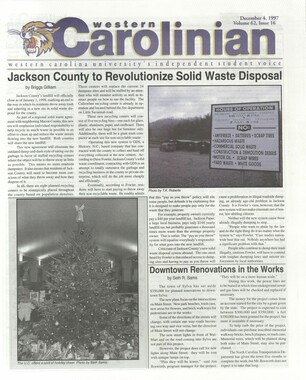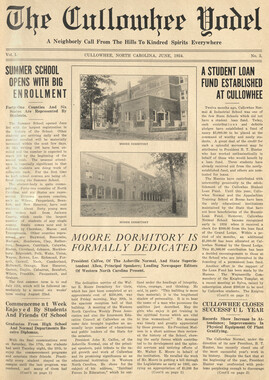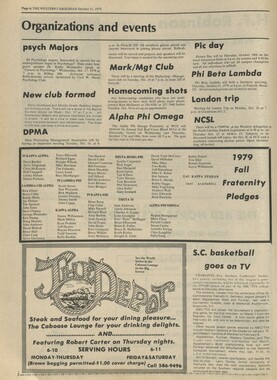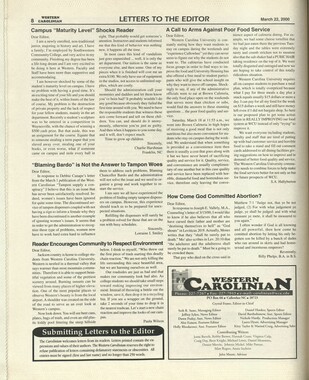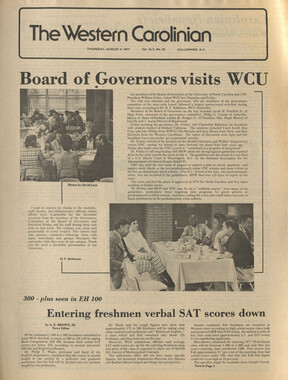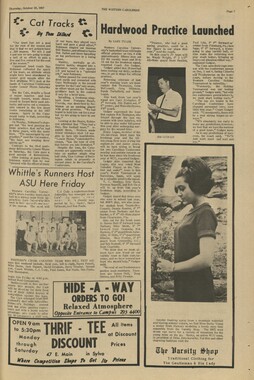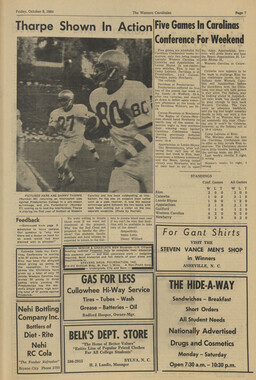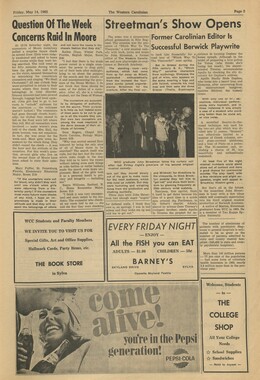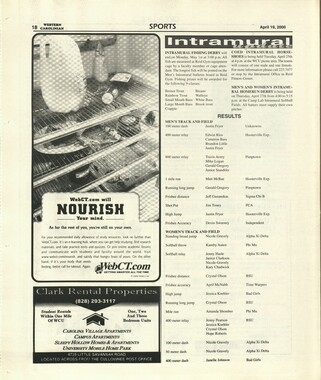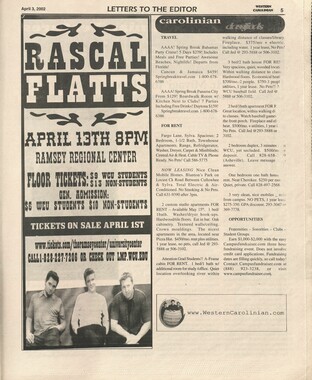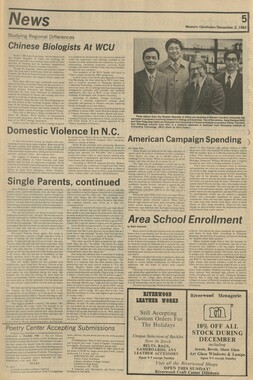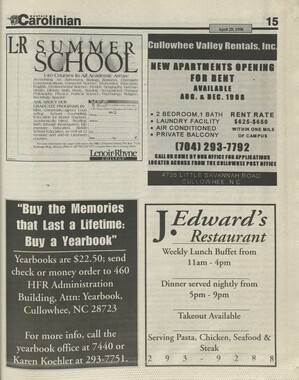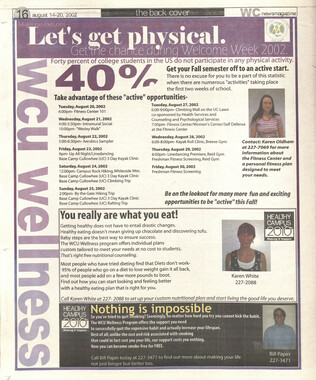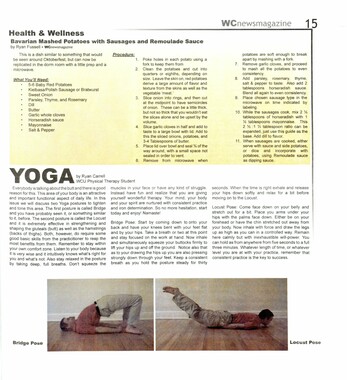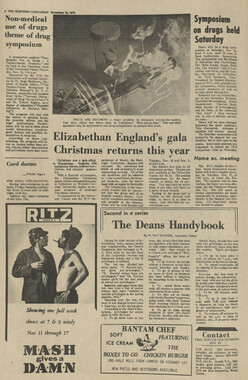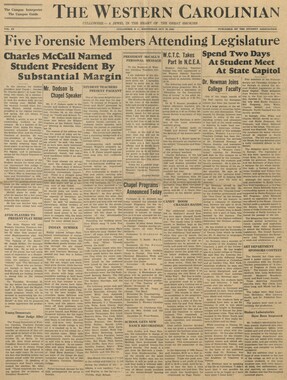Western Carolina University (21)
View all
- Canton Champion Fibre Company (2308)
- Cherokee Traditions (291)
- Civil War in Southern Appalachia (165)
- Craft Revival (1942)
- George Masa Collection (137)
- Great Smoky Mountains - A Park for America (3080)
- Highlights from Western Carolina University (422)
- Horace Kephart (973)
- Journeys Through Jackson (159)
- LGBTQIA+ Archive of Jackson County (89)
- Oral Histories of Western North Carolina (318)
- Picturing Appalachia (6617)
- Stories of Mountain Folk (413)
- Travel Western North Carolina (153)
- Western Carolina University Fine Art Museum Vitreograph Collection (129)
- Western Carolina University Herbarium (92)
- Western Carolina University: Making Memories (738)
- Western Carolina University Publications (2491)
- Western Carolina University Restricted Electronic Theses and Dissertations (146)
- Western North Carolina Regional Maps (71)
- World War II in Southern Appalachia (131)
University of North Carolina Asheville (6)
View all
- Allanstand Cottage Industries (62)
- Appalachian National Park Association (53)
- Bennett, Kelly, 1890-1974 (1463)
- Berry, Walter (76)
- Brasstown Carvers (40)
- Carver, George Washington, 1864?-1943 (26)
- Cathey, Joseph, 1803-1874 (1)
- Champion Fibre Company (233)
- Champion Paper and Fibre Company (297)
- Cherokee Indian Fair Association (16)
- Cherokee Language Program (22)
- Crowe, Amanda (40)
- Edmonston, Thomas Benton, 1842-1907 (7)
- Ensley, A. L. (Abraham Lincoln), 1865-1948 (275)
- Fromer, Irving Rhodes, 1913-1994 (70)
- George Butz (BFS 1907) (46)
- Goodrich, Frances Louisa (120)
- Grant, George Alexander, 1891-1964 (96)
- Heard, Marian Gladys (60)
- Kephart, Calvin, 1883-1969 (15)
- Kephart, Horace, 1862-1931 (313)
- Kephart, Laura, 1862-1954 (67)
- Laney, Gideon Thomas, 1889-1976 (439)
- Masa, George, 1881-1933 (61)
- McElhinney, William Julian, 1896-1953 (44)
- Niggli, Josephina, 1910-1983 (10)
- North Carolina Park Commission (105)
- Osborne, Kezia Stradley (9)
- Owens, Samuel Robert, 1918-1995 (11)
- Penland Weavers and Potters (36)
- Roberts, Vivienne (15)
- Roth, Albert, 1890-1974 (142)
- Schenck, Carl Alwin, 1868-1955 (1)
- Sherrill's Photography Studio (2565)
- Southern Highland Handicraft Guild (127)
- Southern Highlanders, Inc. (71)
- Stalcup, Jesse Bryson (46)
- Stearns, I. K. (213)
- Thompson, James Edward, 1880-1976 (226)
- United States. Indian Arts and Crafts Board (130)
- USFS (683)
- Vance, Zebulon Baird, 1830-1894 (1)
- Weaver, Zebulon, 1872-1948 (58)
- Western Carolina College (230)
- Western Carolina Teachers College (282)
- Western Carolina University (2008)
- Western Carolina University. Mountain Heritage Center (18)
- Whitman, Walt, 1819-1892 (10)
- Wilburn, Hiram Coleman, 1880-1967 (73)
- Williams, Isadora (3)
- Cain, Doreyl Ammons (0)
- Crittenden, Lorraine (0)
- Rhodes, Judy (0)
- Smith, Edward Clark (0)
- Appalachian Region, Southern (3032)
- Asheville (N.C.) (1945)
- Avery County (N.C.) (26)
- Blount County (Tenn.) (195)
- Buncombe County (N.C.) (1680)
- Cherokee County (N.C.) (283)
- Clay County (N.C.) (556)
- Graham County (N.C.) (238)
- Great Smoky Mountains National Park (N.C. and Tenn.) (525)
- Haywood County (N.C.) (3573)
- Henderson County (N.C.) (70)
- Jackson County (N.C.) (4925)
- Knox County (Tenn.) (35)
- Knoxville (Tenn.) (13)
- Lake Santeetlah (N.C.) (10)
- Macon County (N.C.) (421)
- Madison County (N.C.) (216)
- McDowell County (N.C.) (39)
- Mitchell County (N.C.) (135)
- Polk County (N.C.) (35)
- Qualla Boundary (982)
- Rutherford County (N.C.) (78)
- Swain County (N.C.) (2185)
- Transylvania County (N.C.) (270)
- Watauga County (N.C.) (12)
- Waynesville (N.C.) (86)
- Yancey County (N.C.) (72)
- Aerial Photographs (3)
- Aerial Views (60)
- Albums (books) (4)
- Articles (1)
- Artifacts (object Genre) (228)
- Bibliographies (1)
- Biography (general Genre) (2)
- Cards (information Artifacts) (38)
- Clippings (information Artifacts) (192)
- Copybooks (instructional Materials) (3)
- Crafts (art Genres) (622)
- Depictions (visual Works) (21)
- Design Drawings (1)
- Digital Moving Image Formats (2)
- Drawings (visual Works) (185)
- Envelopes (101)
- Exhibitions (events) (1)
- Facsimiles (reproductions) (1)
- Fiction (general Genre) (4)
- Financial Records (12)
- Fliers (printed Matter) (67)
- Glass Plate Negatives (381)
- Guidebooks (2)
- Internegatives (10)
- Interviews (823)
- Land Surveys (102)
- Letters (correspondence) (1045)
- Manuscripts (documents) (618)
- Maps (documents) (177)
- Memorandums (25)
- Minutes (administrative Records) (59)
- Negatives (photographs) (6090)
- Newsletters (1290)
- Newspapers (2)
- Notebooks (8)
- Occupation Currency (1)
- Paintings (visual Works) (1)
- Pen And Ink Drawings (1)
- Periodicals (194)
- Personal Narratives (10)
- Photographs (12977)
- Plans (maps) (1)
- Poetry (6)
- Portraits (4568)
- Postcards (329)
- Programs (documents) (181)
- Publications (documents) (2444)
- Questionnaires (65)
- Relief Prints (26)
- Sayings (literary Genre) (1)
- Scrapbooks (282)
- Sheet Music (2)
- Slides (photographs) (402)
- Songs (musical Compositions) (2)
- Sound Recordings (802)
- Specimens (92)
- Speeches (documents) (18)
- Tintypes (photographs) (8)
- Transcripts (329)
- Text Messages (0)
- A.L. Ensley Collection (275)
- Appalachian Industrial School Records (7)
- Appalachian National Park Association Records (336)
- Axley-Meroney Collection (2)
- Bayard Wootten Photograph Collection (20)
- Bethel Rural Community Organization Collection (7)
- Blumer Collection (5)
- C.W. Slagle Collection (20)
- Canton Area Historical Museum (2110)
- Carlos C. Campbell Collection (462)
- Cataloochee History Project (64)
- Cherokee Studies Collection (4)
- Daisy Dame Photograph Album (5)
- Daniel Boone VI Collection (1)
- Doris Ulmann Photograph Collection (112)
- Elizabeth H. Lasley Collection (1)
- Elizabeth Woolworth Szold Fleharty Collection (4)
- Frank Fry Collection (95)
- George Masa Collection (173)
- Gideon Laney Collection (452)
- Hazel Scarborough Collection (2)
- Hiram C. Wilburn Papers (28)
- Historic Photographs Collection (236)
- Horace Kephart Collection (861)
- Humbard Collection (33)
- Hunter and Weaver Families Collection (1)
- I. D. Blumenthal Collection (4)
- Isadora Williams Collection (4)
- Jesse Bryson Stalcup Collection (47)
- Jim Thompson Collection (224)
- John B. Battle Collection (7)
- John C. Campbell Folk School Records (80)
- John Parris Collection (6)
- Judaculla Rock project (2)
- Kelly Bennett Collection (1482)
- Love Family Papers (11)
- Major Wiley Parris Civil War Letters (3)
- Map Collection (12)
- McFee-Misemer Civil War Letters (34)
- Mountain Heritage Center Collection (4)
- Norburn - Robertson - Thomson Families Collection (44)
- Pauline Hood Collection (7)
- Pre-Guild Collection (2)
- Qualla Arts and Crafts Mutual Collection (12)
- R.A. Romanes Collection (681)
- Rosser H. Taylor Collection (1)
- Samuel Robert Owens Collection (94)
- Sara Madison Collection (144)
- Sherrill Studio Photo Collection (2558)
- Smoky Mountains Hiking Club Collection (616)
- Stories of Mountain Folk - Radio Programs (374)
- The Reporter, Western Carolina University (510)
- Venoy and Elizabeth Reed Collection (16)
- WCU Gender and Sexuality Oral History Project (36)
- WCU Mountain Heritage Center Oral Histories (25)
- WCU Oral History Collection - Mountain People, Mountain Lives (71)
- WCU Students Newspapers Collection (1923)
- Western North Carolina Tomorrow Black Oral History Project (69)
- William Williams Stringfield Collection (2)
- Zebulon Weaver Collection (109)
- African Americans (390)
- Appalachian Trail (35)
- Artisans (521)
- Cherokee art (84)
- Cherokee artists -- North Carolina (10)
- Cherokee language (21)
- Cherokee pottery (101)
- Cherokee women (208)
- Church buildings (190)
- Civilian Conservation Corps (U.S.) (111)
- College student newspapers and periodicals (2012)
- Dams (108)
- Dance (1023)
- Education (222)
- Floods (63)
- Folk music (1015)
- Forced removal, 1813-1903 (2)
- Forest conservation (220)
- Forests and forestry (1198)
- Gender nonconformity (4)
- Great Smoky Mountains National Park (N.C. and Tenn.) (181)
- Hunting (47)
- Landscape photography (25)
- Logging (122)
- Maps (83)
- Mines and mineral resources (9)
- North Carolina -- Maps (18)
- Paper industry (38)
- Postcards (255)
- Pottery (135)
- Railroad trains (72)
- Rural electrification -- North Carolina, Western (3)
- School integration -- Southern States (2)
- Segregation -- North Carolina, Western (5)
- Slavery (5)
- Sports (452)
- Storytelling (243)
- Waterfalls -- Great Smoky Mountains (N.C. and Tenn.) (66)
- Weaving -- Appalachian Region, Southern (280)
- Wood-carving -- Appalachian Region, Southern (328)
- World War, 1939-1945 (173)
Western Carolinian (Volume 69 Number 04)
Item
Item’s are ‘child’ level descriptions to ‘parent’ objects, (e.g. one page of a whole book).
-
-
WC newsmagazine Violence is brutally honest by Traci White I WCnewsmagazine If someone handed me a katana right now, I'd snag myself a yellow suit a la Beatrix Kiddo and have my revenge. Labor Day weekend of 2004 will forever be - remembered as Tarantino and Associates Weekend. Kill Bill Vol. 1, Kill Bill Vol. 2, Reservoir Dogs, Pulp Fiction, The Boondock Saints, and Lock, Stock, and Two Smoking Barrels all came on TV within the course of 48 hours. | couldn't help but grimace at the profuse amounts of blood coveri ng the celluloid and jug the urge to grasp at my own limbs while characters on the screen were having theirs severed. Now more than any preceding cinematic era, violence has become an artistic motifa rhetorical device. What has made gruesomeness so commonplace? The earlier years of cinema were either incapable of or unconcerned with convincingly violent scenes. Horror movies with elaborately ghoulish costumes were the _ extent of anxiety in the fledgling films of Hollywood, featuring either a dastardly fiend who tied wide-eyed damsels to train tracks or individuals with popular Halloween costumes tossing these damsels (distressed, no doubt) over their shoulders. During the decades of black and white film, Alfred Hitchcock was synonymous with nail-biting terror. Hershey's syrup, broad shots isolating the frightened protagonist and the sinister presence of shadows defined this directors auteur. Yet even this man, whose name still means horror to many, rarely indulged in gratuitously violent scenes, a temperance practiced by his colleagues even more fastidiously. As technology has improved, the degree of brutality on screen has followed suit. With the advent of Technicolor, the impact of a bloodied character seemed to increase ten fold. | feel this arguably disturbing trend begs the question: has cinema become more violent thanks to desensitization of its audience or because the industry has gotten its hands on more convincing fake blood and computer-generated murders? There is a visceral appeal and earnestness to violence that cannot be recreated by the most impassioned dialogue. It conveys physical prowess and control, and hopes to inspire admiration. We have grown up taking violence in stride, surrounded by it on all sides. We have gotten to the point where it can be analyzed for its virtues and described as artful. Yet grace and awkwardness are simultaneous in it; it sweats, drools, writhes on the ground completely stripped of dignity. It bleeds. Violence is courageous in a way that most of us will never show as it determinedly tries to get back on its feet. It is both inhumane and consummately human. It is unbridled passion, yet it still has the capacity to respect its opponent. Violence gets to you. It is non-discriminating and the ultimate equalizer. Violence as a human instinct may be contested, but the recurrence of it throughout history cannot be ignored. Since Cro-Magnon hominids dragged themselves around the earth, an animalistic urge to negotiate via combat has existed. Each historical era has its own so-called noble warrior: the dignified samurai, the swift archer and the motivated foot soldier. In the modern paradigm, civilizations on the whole have moved away from the feuding dynasties and city states, yet violence has not abated. Crime seems to set a new standard of ruthlessness for itself everyday, both in scale and inhumanity. My generation has grown up with sound bites announcing the fame of viruses, con men, spies, serial killers, terrorists, natural disasters and political coups. Thanks to the all- inclusive arm of the media, we have a constant stream of disasters screaming in our ears and shoved in our faces. With violence having established itself as a regular in the white noise sitcom of our lives, it has begun to take on a persona all its own. We baby boomers babies are jaded by what we have seen in our youth; we are smirking, witheringly clever. Mean is the new black. Yet no matter how jaded we believe ourselves to be, the superiority of violence still looms over In remembrance of the tragic events of September Eleventh COMMENTARY
Object
Object’s are ‘parent’ level descriptions to ‘children’ items, (e.g. a book with pages).
-
The Western Carolinian is Western Carolina University's student-run newspaper. The paper was published as the Cullowhee Yodel from 1924 to 1931 before changing its name to The Western Carolinian in 1933.
-
![hl_westerncarolinian_2004_[vol69_no04]_15.jpg](/media/w320/wcu_publications/hl_westerncarolinian_2004_[vol69_no04]_15.jpg)
![hl_westerncarolinian_2004_[vol69_no04]_15.jpg](/media/w1000h500/wcu_publications/hl_westerncarolinian_2004_[vol69_no04]_15.jpg)
![hl_westerncarolinian_2004_[vol69_no04]_01.jpg](/media/w320/wcu_publications/hl_westerncarolinian_2004_[vol69_no04]_01.jpg)
![hl_westerncarolinian_2004_[vol69_no04]_02.jpg](/media/w320/wcu_publications/hl_westerncarolinian_2004_[vol69_no04]_02.jpg)
![hl_westerncarolinian_2004_[vol69_no04]_03.jpg](/media/w320/wcu_publications/hl_westerncarolinian_2004_[vol69_no04]_03.jpg)
![hl_westerncarolinian_2004_[vol69_no04]_04.jpg](/media/w320/wcu_publications/hl_westerncarolinian_2004_[vol69_no04]_04.jpg)
![hl_westerncarolinian_2004_[vol69_no04]_05.jpg](/media/w320/wcu_publications/hl_westerncarolinian_2004_[vol69_no04]_05.jpg)
![hl_westerncarolinian_2004_[vol69_no04]_06.jpg](/media/w320/wcu_publications/hl_westerncarolinian_2004_[vol69_no04]_06.jpg)
![hl_westerncarolinian_2004_[vol69_no04]_07.jpg](/media/w320/wcu_publications/hl_westerncarolinian_2004_[vol69_no04]_07.jpg)
![hl_westerncarolinian_2004_[vol69_no04]_08.jpg](/media/w320/wcu_publications/hl_westerncarolinian_2004_[vol69_no04]_08.jpg)
![hl_westerncarolinian_2004_[vol69_no04]_09.jpg](/media/w320/wcu_publications/hl_westerncarolinian_2004_[vol69_no04]_09.jpg)
![hl_westerncarolinian_2004_[vol69_no04]_10.jpg](/media/w320/wcu_publications/hl_westerncarolinian_2004_[vol69_no04]_10.jpg)
![hl_westerncarolinian_2004_[vol69_no04]_11.jpg](/media/w320/wcu_publications/hl_westerncarolinian_2004_[vol69_no04]_11.jpg)
![hl_westerncarolinian_2004_[vol69_no04]_12.jpg](/media/w320/wcu_publications/hl_westerncarolinian_2004_[vol69_no04]_12.jpg)
![hl_westerncarolinian_2004_[vol69_no04]_13.jpg](/media/w320/wcu_publications/hl_westerncarolinian_2004_[vol69_no04]_13.jpg)
![hl_westerncarolinian_2004_[vol69_no04]_14.jpg](/media/w320/wcu_publications/hl_westerncarolinian_2004_[vol69_no04]_14.jpg)
![hl_westerncarolinian_2004_[vol69_no04]_16.jpg](/media/w320/wcu_publications/hl_westerncarolinian_2004_[vol69_no04]_16.jpg)
![hl_westerncarolinian_2004_[vol69_no04]_17.jpg](/media/w320/wcu_publications/hl_westerncarolinian_2004_[vol69_no04]_17.jpg)
![hl_westerncarolinian_2004_[vol69_no04]_18.jpg](/media/w320/wcu_publications/hl_westerncarolinian_2004_[vol69_no04]_18.jpg)
![hl_westerncarolinian_2004_[vol69_no04]_19.jpg](/media/w320/wcu_publications/hl_westerncarolinian_2004_[vol69_no04]_19.jpg)
![hl_westerncarolinian_2004_[vol69_no04]_20.jpg](/media/w320/wcu_publications/hl_westerncarolinian_2004_[vol69_no04]_20.jpg)
